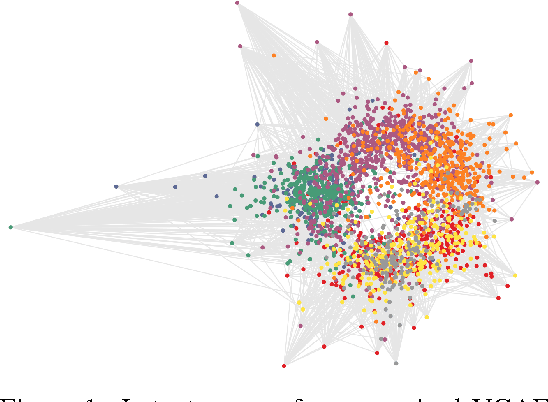Thomas N. Kipf
Modeling Relational Data with Graph Convolutional Networks
Oct 26, 2017



Abstract:Knowledge graphs enable a wide variety of applications, including question answering and information retrieval. Despite the great effort invested in their creation and maintenance, even the largest (e.g., Yago, DBPedia or Wikidata) remain incomplete. We introduce Relational Graph Convolutional Networks (R-GCNs) and apply them to two standard knowledge base completion tasks: Link prediction (recovery of missing facts, i.e. subject-predicate-object triples) and entity classification (recovery of missing entity attributes). R-GCNs are related to a recent class of neural networks operating on graphs, and are developed specifically to deal with the highly multi-relational data characteristic of realistic knowledge bases. We demonstrate the effectiveness of R-GCNs as a stand-alone model for entity classification. We further show that factorization models for link prediction such as DistMult can be significantly improved by enriching them with an encoder model to accumulate evidence over multiple inference steps in the relational graph, demonstrating a large improvement of 29.8% on FB15k-237 over a decoder-only baseline.
Graph Convolutional Matrix Completion
Oct 25, 2017



Abstract:We consider matrix completion for recommender systems from the point of view of link prediction on graphs. Interaction data such as movie ratings can be represented by a bipartite user-item graph with labeled edges denoting observed ratings. Building on recent progress in deep learning on graph-structured data, we propose a graph auto-encoder framework based on differentiable message passing on the bipartite interaction graph. Our model shows competitive performance on standard collaborative filtering benchmarks. In settings where complimentary feature information or structured data such as a social network is available, our framework outperforms recent state-of-the-art methods.
Semi-Supervised Classification with Graph Convolutional Networks
Feb 22, 2017



Abstract:We present a scalable approach for semi-supervised learning on graph-structured data that is based on an efficient variant of convolutional neural networks which operate directly on graphs. We motivate the choice of our convolutional architecture via a localized first-order approximation of spectral graph convolutions. Our model scales linearly in the number of graph edges and learns hidden layer representations that encode both local graph structure and features of nodes. In a number of experiments on citation networks and on a knowledge graph dataset we demonstrate that our approach outperforms related methods by a significant margin.
Variational Graph Auto-Encoders
Nov 21, 2016

Abstract:We introduce the variational graph auto-encoder (VGAE), a framework for unsupervised learning on graph-structured data based on the variational auto-encoder (VAE). This model makes use of latent variables and is capable of learning interpretable latent representations for undirected graphs. We demonstrate this model using a graph convolutional network (GCN) encoder and a simple inner product decoder. Our model achieves competitive results on a link prediction task in citation networks. In contrast to most existing models for unsupervised learning on graph-structured data and link prediction, our model can naturally incorporate node features, which significantly improves predictive performance on a number of benchmark datasets.
 Add to Chrome
Add to Chrome Add to Firefox
Add to Firefox Add to Edge
Add to Edge